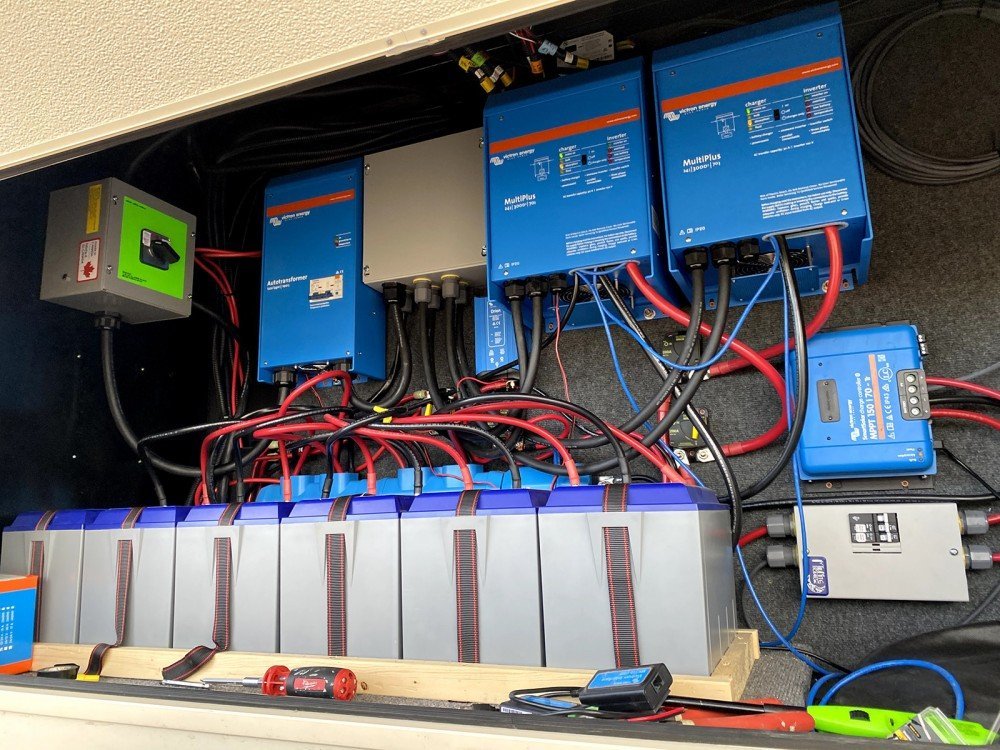Dual Victron Multiplus 3000 3-Phase 50amp Power Issues
November 1st, 2020
Trouble in Paradise
The problem: you have a dual Victron Multiplus 3000 setup and from time to time when hooked up to certain 50 amp services, your setup only pulls in power from one of the legs.
This article will detail our experience with the above issue as well as our solution in solving it.
DISCLAIMER - While I am certainly handy, I am not a professional electrician, and all info below is based on my own research and discussions with actual electrical professionals. It is highly likely I may be incorrectly describing certain aspects of the below, so please consult with your own expert(s) before adjusting your own system.
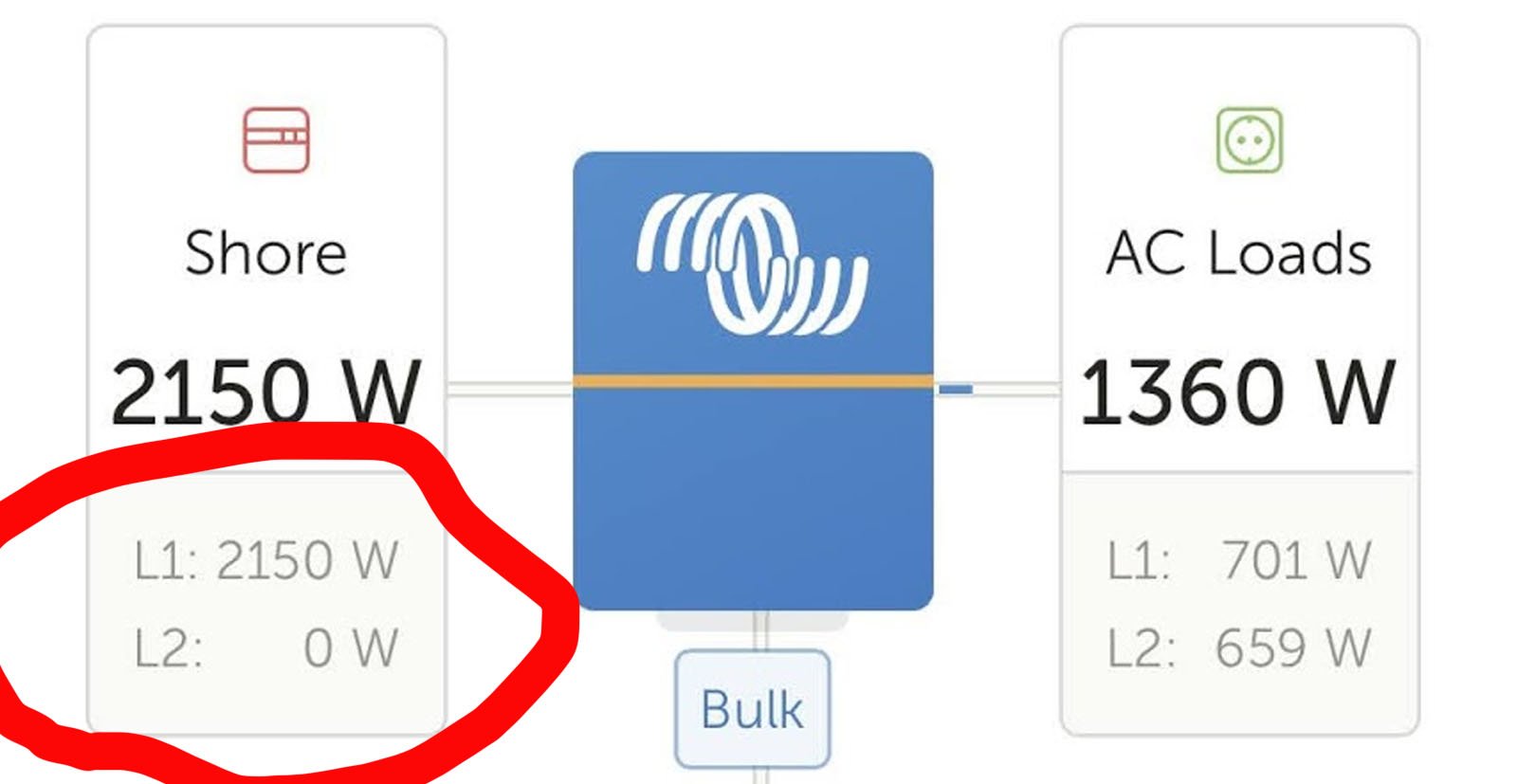
We are extremely fortunate to have such a robust boondocking setup on our RV. As mentioned in a previous post, we are equipped with 6 100ah Battle Born Lithium batteries running through a dual Victron Multiplus 3000 inverter setup, all supported by 1600 watts of solar panels on the roof. While this setup is super robust and allows us to run literally anything in our rig while boondocking, albeit not indefinitely, it does have one rather unexpected foil - the dreaded 3-Phase (or 120deg) 50 amp service.
In most RV parks, when hooking up to a 50 amp receptacle you will be pulling a full 120/240V connection, which is two hot legs coming through at 180deg phase from one another. This 180deg phase is what makes the connection both 120V and 240V capable, the latter of which is essential in some larger RVs for certain appliances such as clothes dryers. However, in some RV parks (usually the older ones) a different wiring method is used so as the 50 amp service is in fact pushing out a 120/208V connection, which is fine for most RVs but will cause trouble for others because of the appliance requirements - or for those who have a fancy dual inverter setup like we do.
Victron Configuration Settings to the Rescue! Almost...
Victron's Multiplus inverters are pretty amazing, and have a lot of configuration options. I was sure there would be an option to fix the fact that we were only getting power from one of our legs, and sure enough - there was! The below setting seemed to be exactly what I was after - the ability for the inverter's L2 output to be more forgiving and allow for a variable phase:
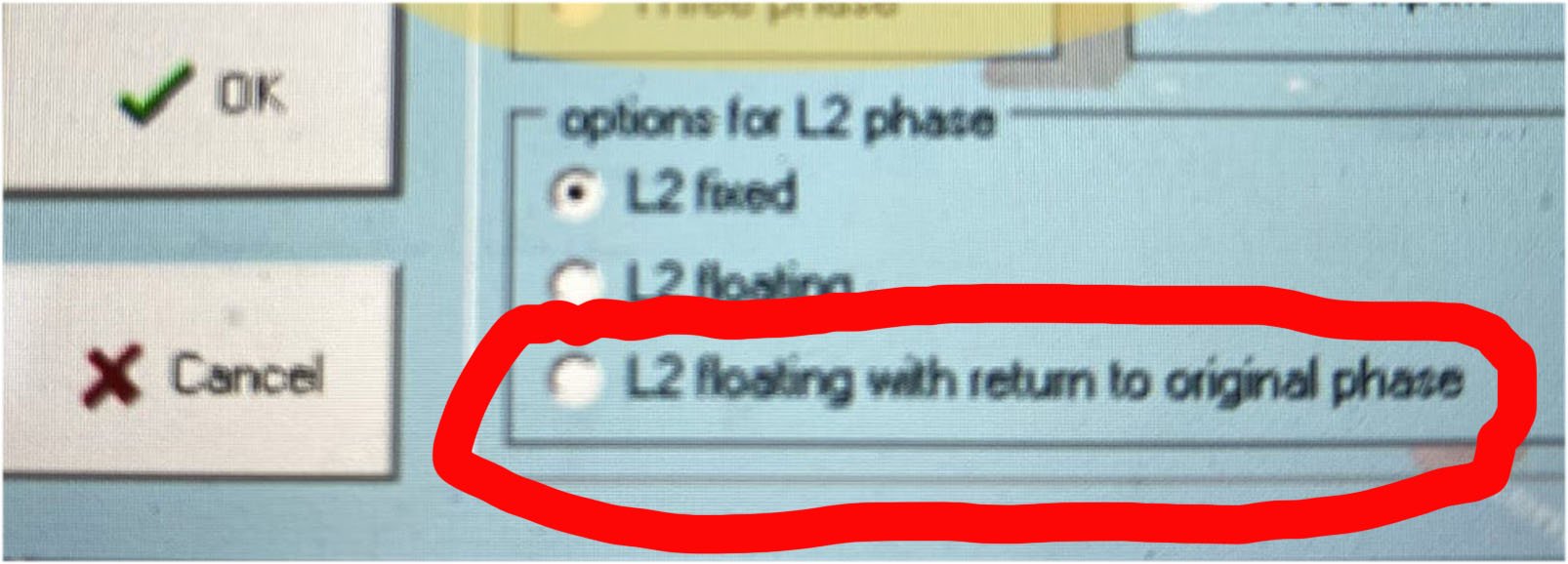
Problem Solved?
Initially, the problem seemed to be fixed! Our L2 output was showing watts passing through and the world seemed right again. I was extremely proud of myself and congratulations were handed around amongst myself liberally.
All seemed well... until weird stuff started happening over the next day or so. The clothes took forever to dry. The convection oven wasn't heating up to temperature. The heaters weren't kicking out the usual amount of heat. I started the process of warranty replacement on our convection oven thinking we had an issue with the unit, and then I started adding up things in my mind and thought to test one of my wall outlets. Sure enough, the issue was found -- the outlet was only kicking out 104V instead of the 120V that it should have been! Arggggh!
So what next? Looks like a deeper dive into electrical components, along with a couple calls to my electrician friend Corey is in order.
120 deg vs 180 deg?
So what the heck does phasing even mean, and what is this 120 deg vs 180 deg business? Below are a couple graphics that show the basics of what each power method look like visually. With the the 120 deg graphic, you can see that the wave forms of each phase never full overlap one-another, which creates the "third phase". It also imposes the limit of 208V on the output.
With the 180 deg graphic, you can see that with each wave, each leg full mirrors one another, thus cancelling out the neutral and allowing for the full 240V of power to be pulled down.
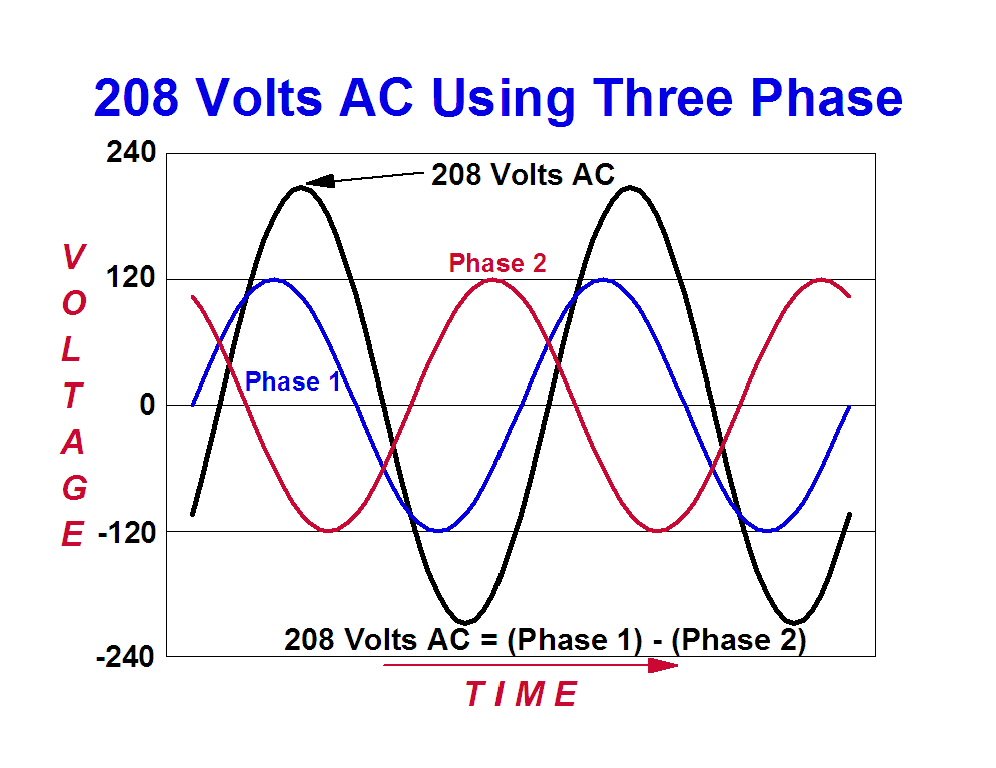
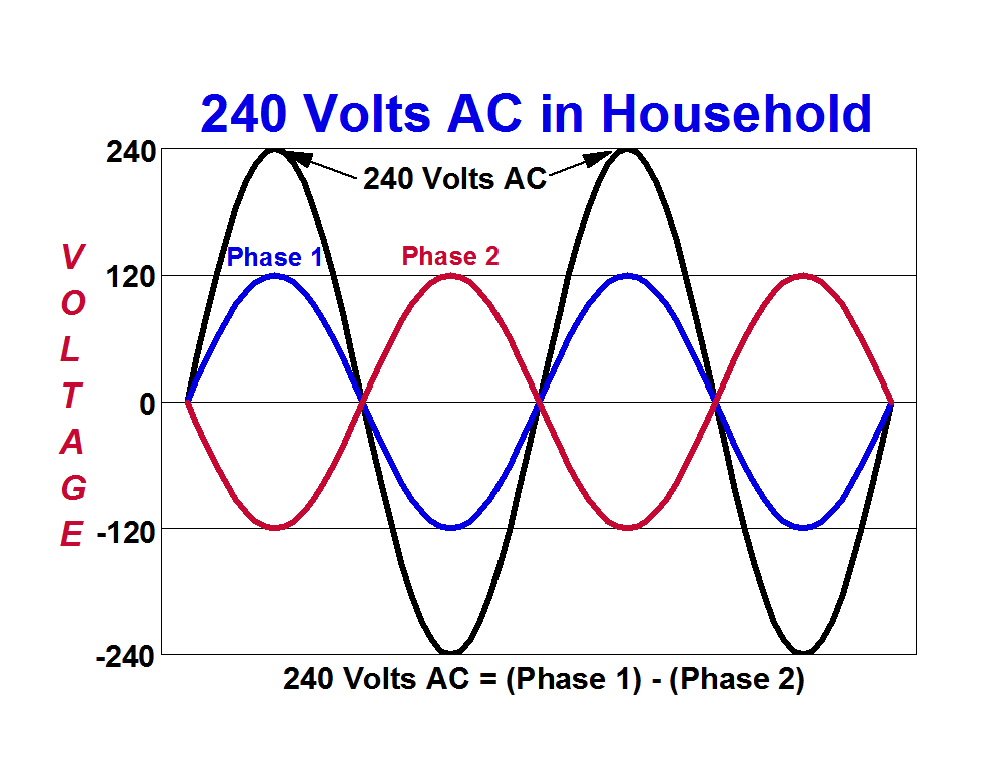
For most RVers with a "normal" setup, with the exception of those with 240V appliances, an RV park using either of the above makes no difference as your rig will pull in power from both legs without any issue. However, for those of us with a dual Victron Multiplus 3000 inverter setup, or more specifically those of us with this setup in combination with a Victron Autotransformer, you will be experiencing issues when on the 3-phase setup.
So Really, What Exactly Is the Problem?
The problem isn't specifically with the inverters, but rather the fault lies with the Victron Autotransformer that sits between our inverters and house panel. Why do we even need the Autotransformer? Excellent question! The purpose of this auto transformer is simple. You have on your 50 amp house panel two "sides", each with loads drawn from the various appliances and outlets in your RV. In our RV, one half contains two of our air conditioners, the convection oven, our fireplace, and the other side contains the 3rd air conditioner, our washer/dryer, and the water heater. Both sides have certain outlets as well.
Each inverter has a max inverting (power source coming from batteries) output of 3000W, with a combined total of 6000W. These dual inverters are wired as such that your two-legged power load from the house panel is split between these inverters. However, your house panel might not be wired so kindly as to split this load equally, and in most cases (including ours), the house panel can draw 4000-5000 watts from one side of our panel and a couple thousand from the other - thus placing an undue burden on one of the inverters if you were trying to boondock and run multiple appliances at once, which would cause an overheating/shutdown issue on the inverter pretty quickly.
This is where the magical Autotransformer comes into action. The Autotransformer performs some voodoo magic and converts that unequal load to a perfectly balanced draw from each inverter - so in the scenario where one half of your electrical panel is asking for 4000 Watts and the other half is asking for 1000 Watts, this Autotransformer will convert this load to a perfectly equal 2500W / 2500 W draw from each inverter, thus auto-balancing and transforming the load so your inverters can work more efficiently and without overload concern.
Wonderful, amazing, fantastic - except when you are hooked up to a 50 amp service that is a three phase, 120 deg setup.
The problem with a 50 amp, three phase 120 deg setup is that this autotransformer has one unfortunate Achilles heel with its "let's split everything, hazzah!" approach - this is because it also splits the available power from a 208V source exactly in half. So your appliances expecting 120V? They are going to get half of 208 - which is 104V, which is way too low and can cause all sorts of issues - your heaters not pushing out much heat, your convection oven never reaching temperature, your dryer never drying your clothes, et cetera.
I'm Getting a Headache. Seriously how did you fix this?
At the end of the day, when we're in "passthrough" mode with our inverters (meaning we're hooked up at an RV park), there is no need for the Autotransformer. Its main job is to split the load of the inverting, and when we're not inverting, it's not truly serving much of a purpose. Therefore, bypassing the autotransformer is the solution in our situation. When hooked up to "bad power" situations, we will bypass the autotransformer, otherwise we will continue to pass power through it.
To test my theory, I unplugged from shore, shut off everything, and rewired our combiner box / autotransformer so that the autotransformer was completely bypassed. Below is a fun photo showing this in action.
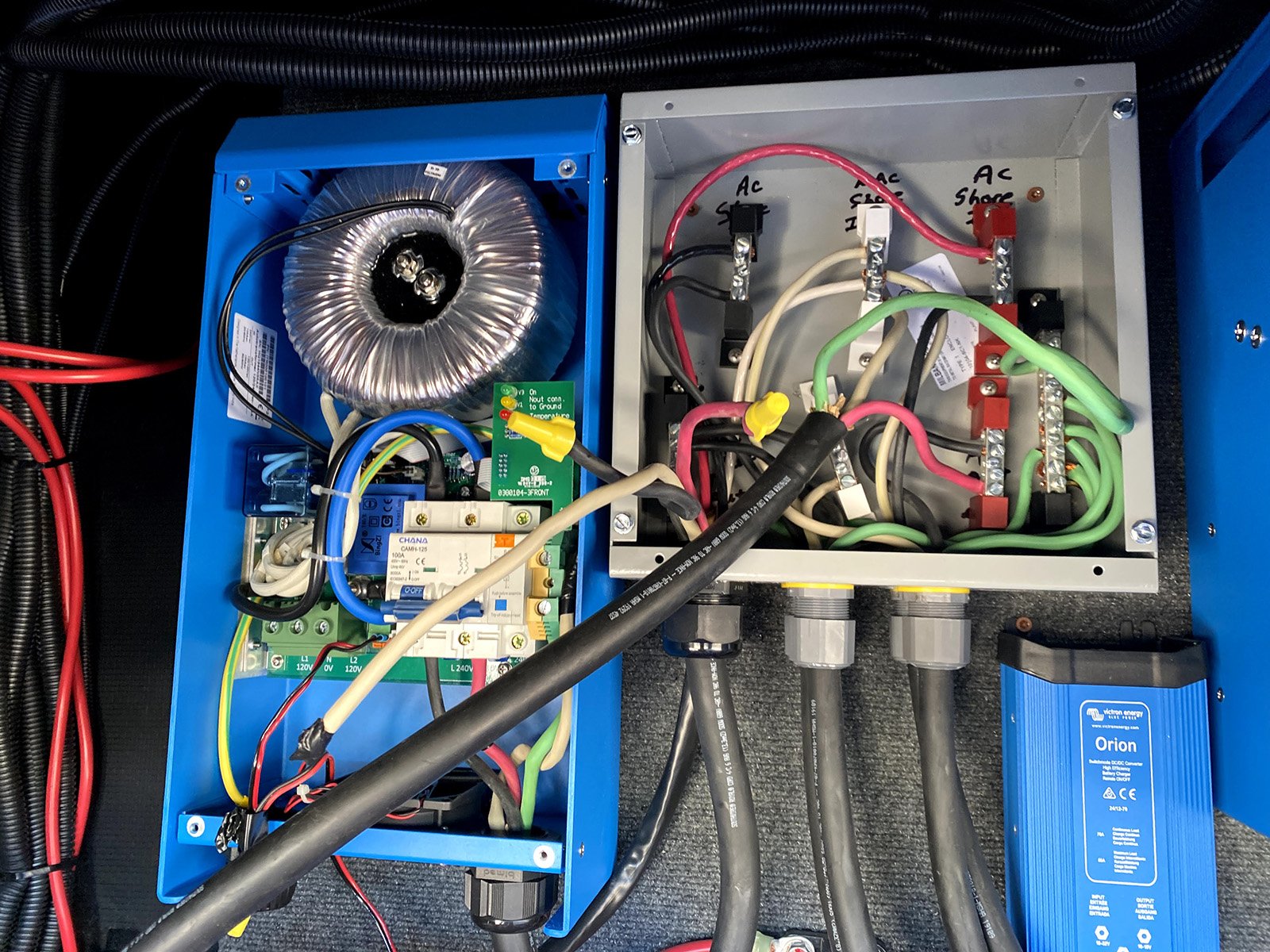
The thick black wire running from the lower left through the front of the right box is the connection to our RV's house panel, which previously was wired to the left side (output) of the autotransformer shown on the left. After testing, I confirmed that this in fact solved my issue - as although my loads were now unequally getting split between each leg, the voltage from my outlets was 120V as it should be.
Making it Permanent - Transfer Switch Install
The next step was ordering in the necessary parts to create a transfer switch that lets me bypass the autotransformer more easily than rewiring the entire thing every time. So I ordered a three-position manual transfer switch from MQTEK Industrial. I ordered the necessary additional wiring and accessories from Amazon. Within a week, all of the supplies arrived and I was able to install the transfer switch to make everything permanent.
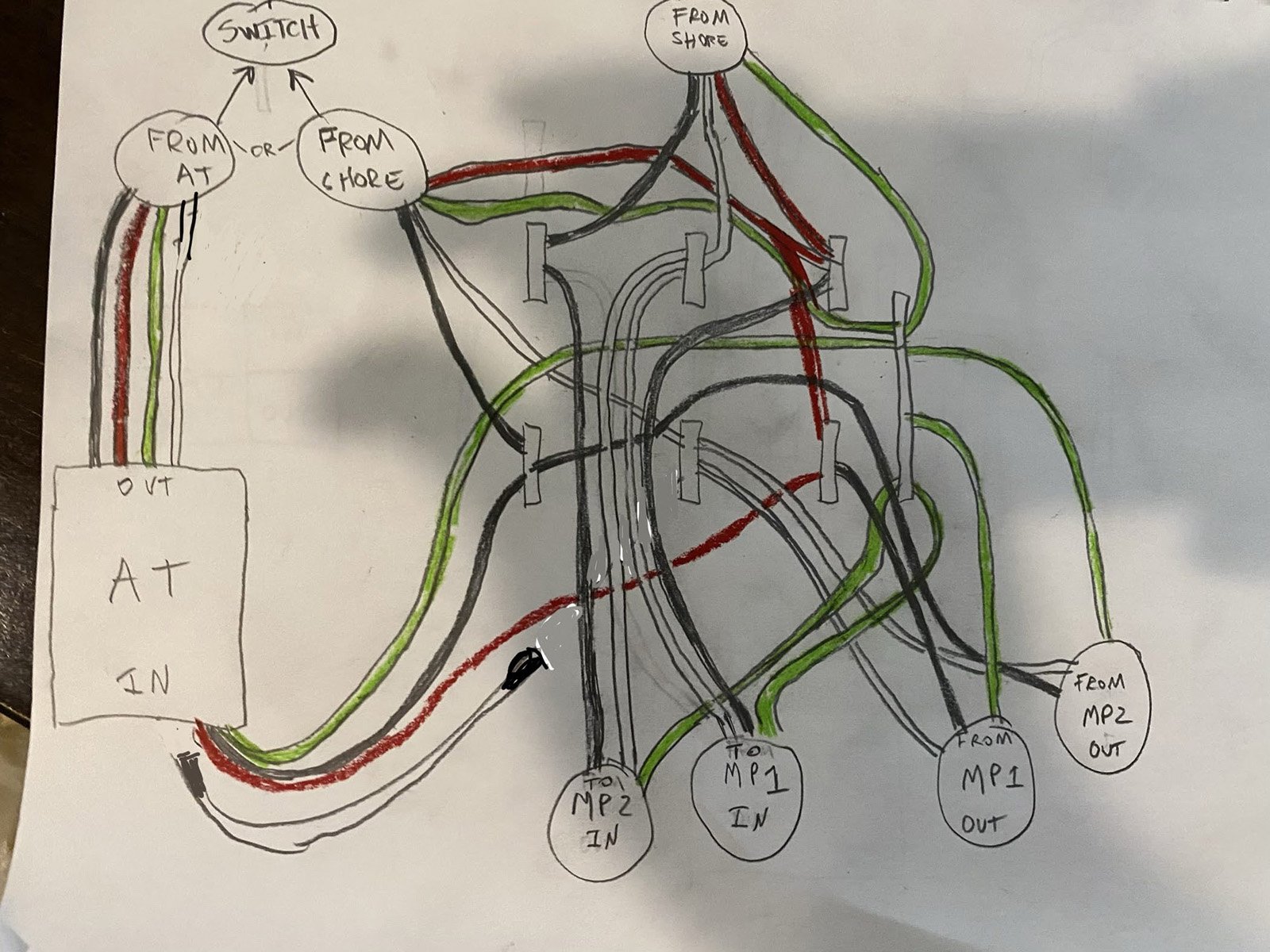
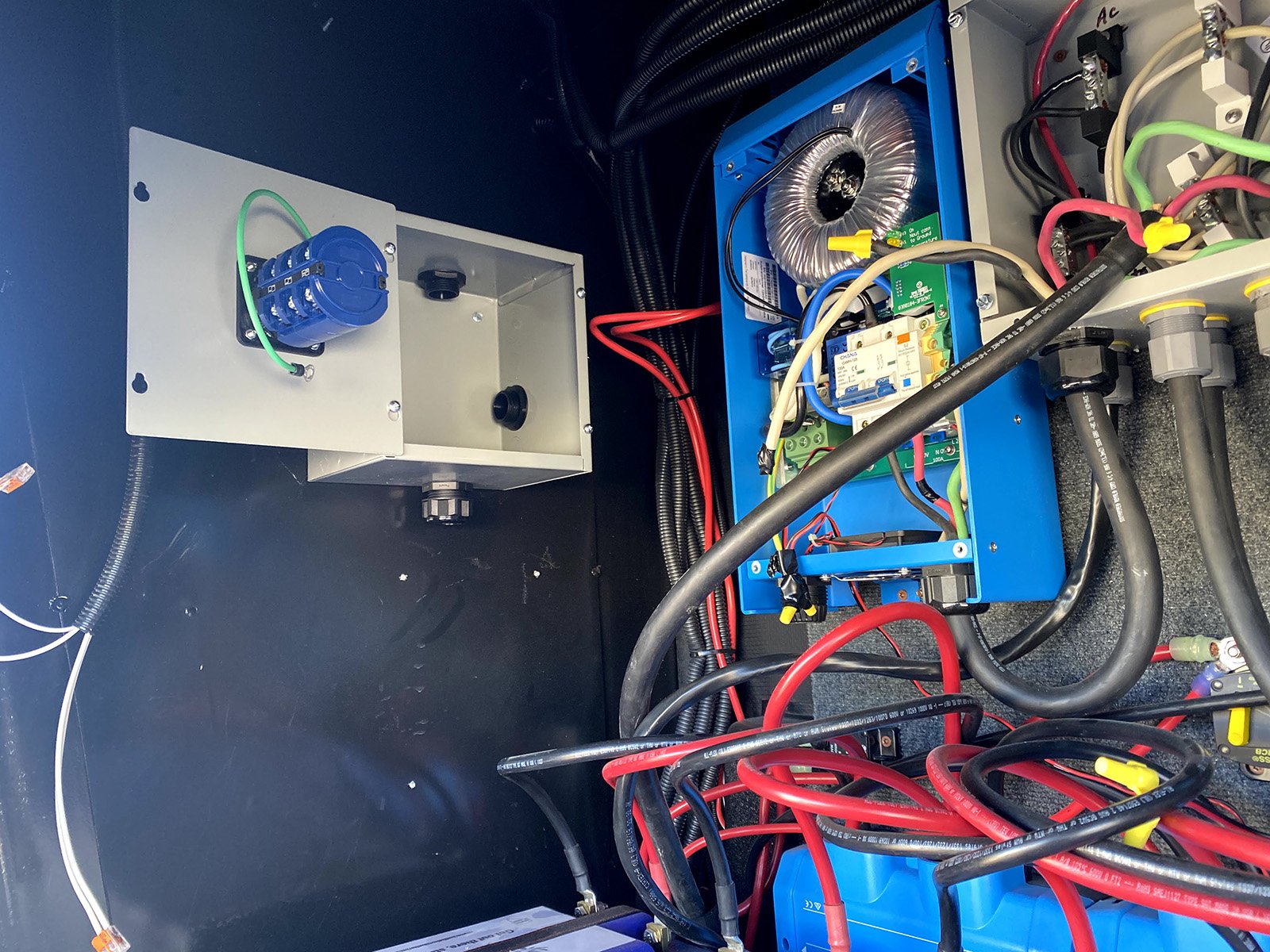
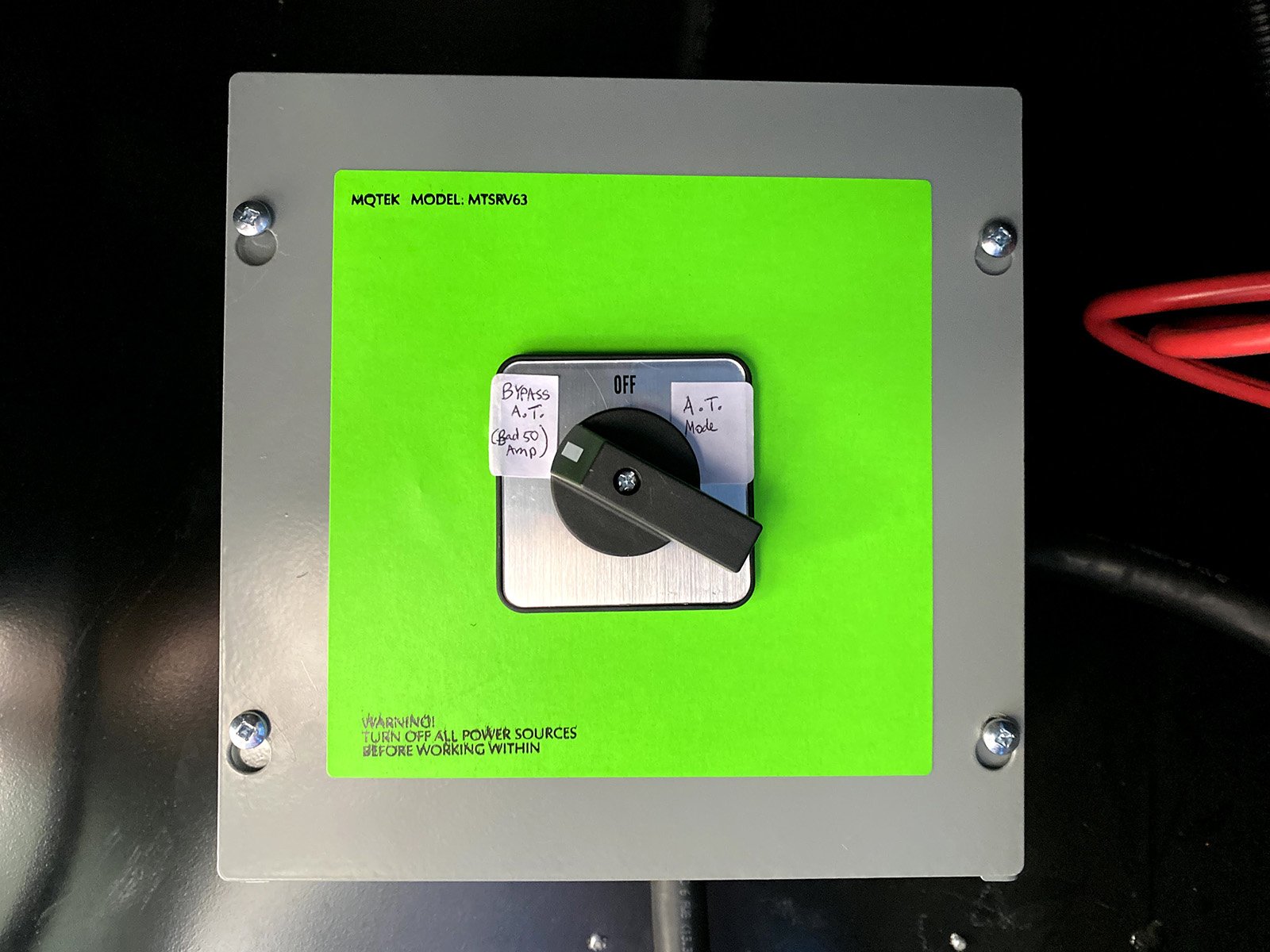
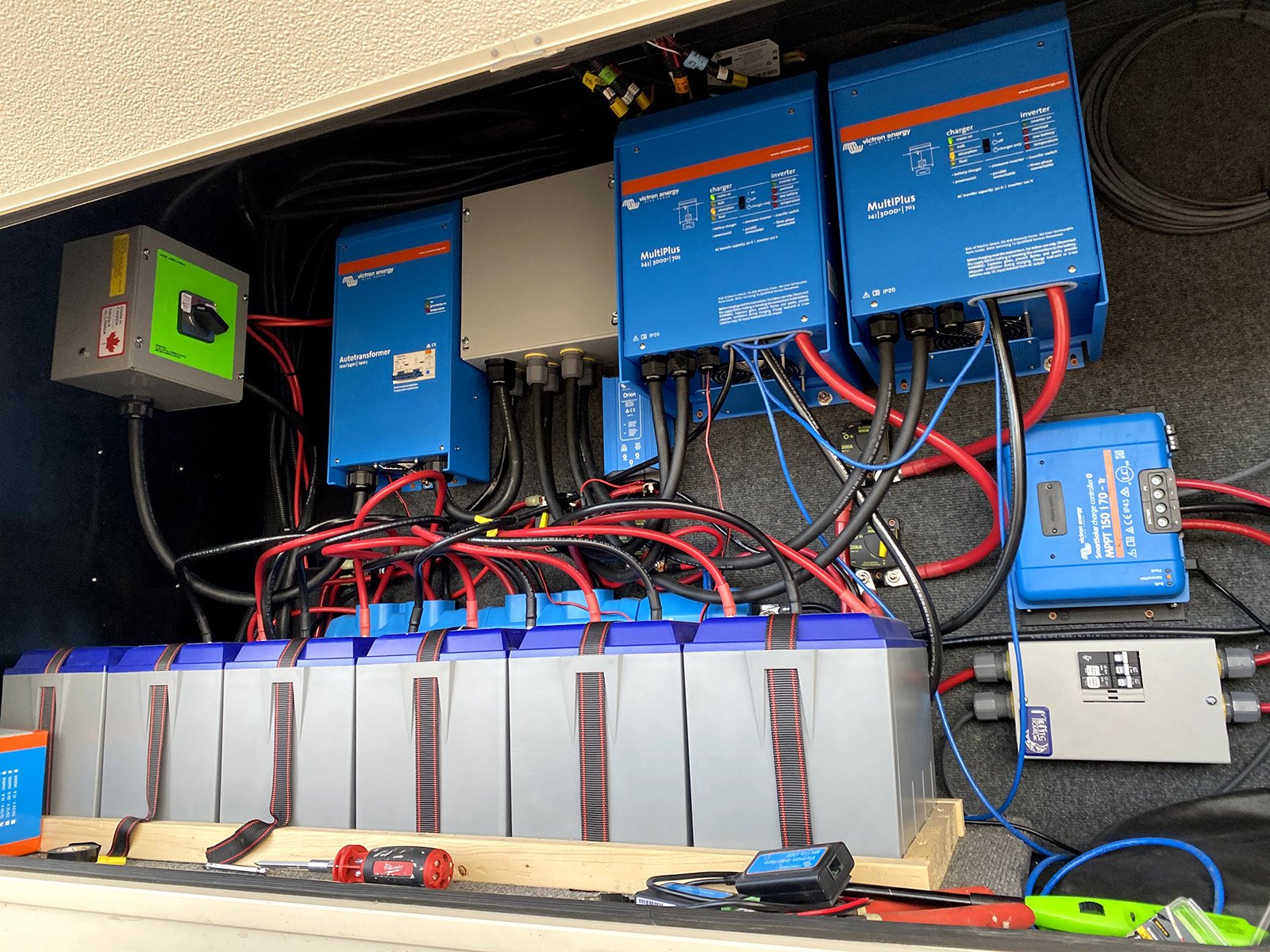
Even though the above was slightly stressful, I am so thankful that it was something we were able to figure out all while being on the road, with barely any inconvenience (and if I'm being honest, a rather enjoyable side project to work on). If anyone out there runs into anything similar to the above and needs an assist, feel free to send me a note! And if you're looking for a professional electrician and solar installer, my friend Corey over at Foltz Solar is top notch (he helped me install everything in our rig last Spring).
Other articles to consider
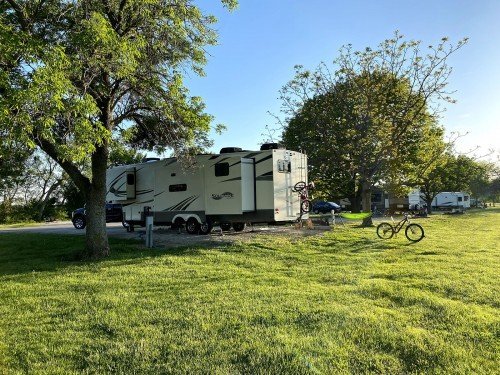 May18Clinton Lake, KS and Sioux City North, SD
We finally are ready to...See Details
May18Clinton Lake, KS and Sioux City North, SD
We finally are ready to...See Details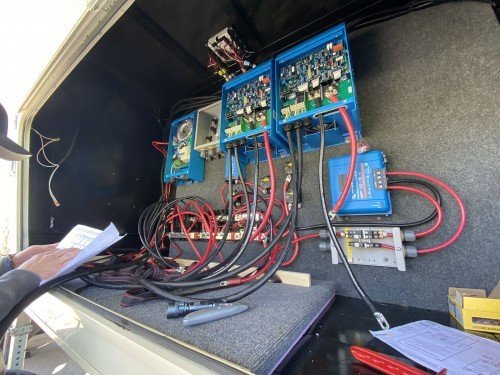 May1(Almost) The First Half of 2020
Wow, what a crazy (almo...See Details
May1(Almost) The First Half of 2020
Wow, what a crazy (almo...See Details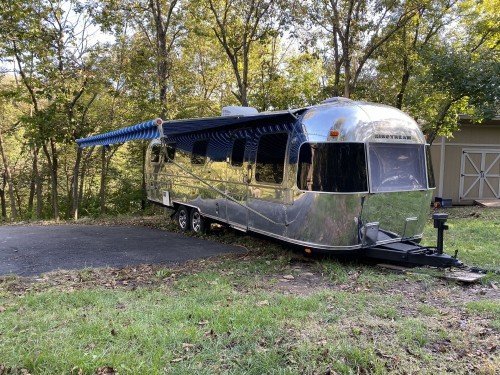 Nov20We Sold the Airstream!As our family continues to get older (an...See Details
Nov20We Sold the Airstream!As our family continues to get older (an...See Details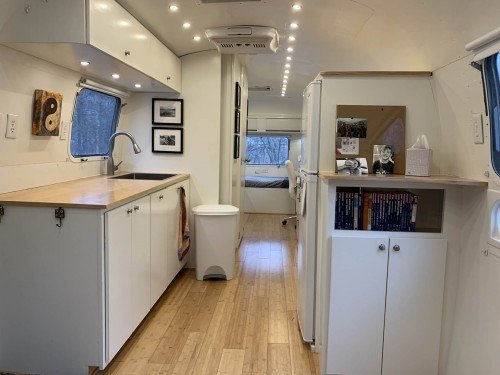 Jan1Stella Upgrades 2019 - New "Bedrooms", Privacy Curtains, Desk, Decor, and Storage
A timely Kansas January...See Details
Jan1Stella Upgrades 2019 - New "Bedrooms", Privacy Curtains, Desk, Decor, and Storage
A timely Kansas January...See Details

